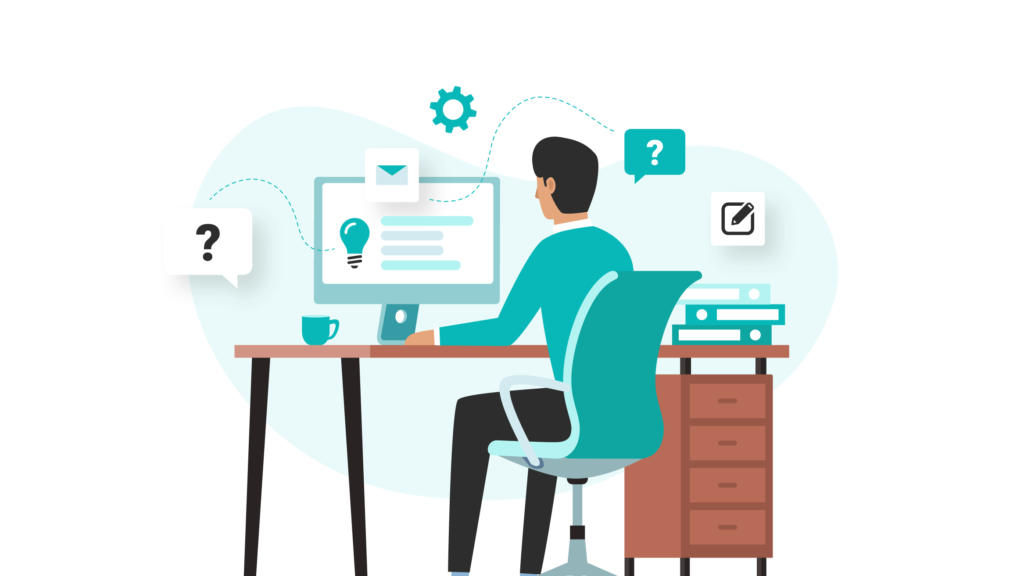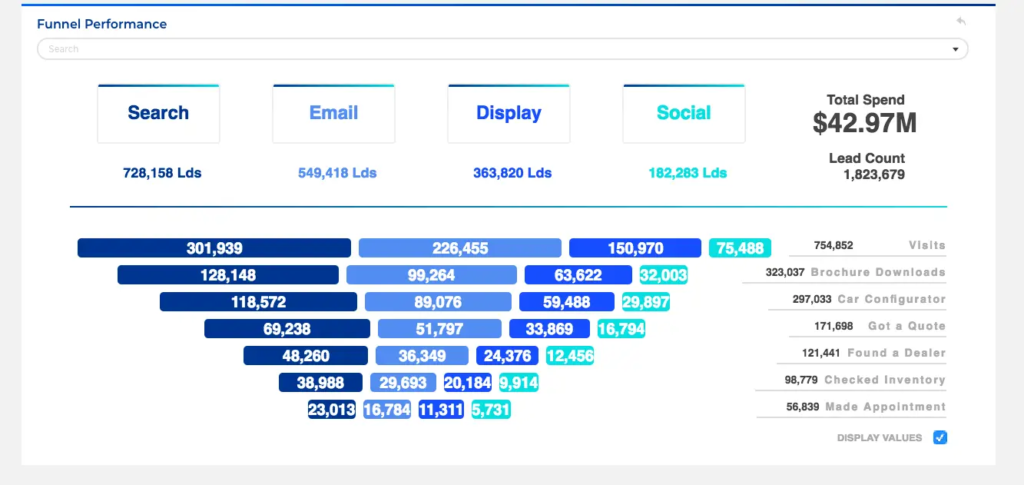Leveraging Buyer Behavior in Salesforce Marketing Automation
- April 11, 2023
- Pardot Automations, Salesforce Ben | The Drip
Understanding buyer behavior is essential, both when times are good and especially when they are uncertain. While buyer psychology and motivations have not altered significantly, in the past two years channels and buyer behaviors have gone through radical change.
Big data can help you understand how the buying process works today, to avoid falling out of favor with your buyers – made even easier now we have better tools and technologies at our disposal. When developing your success strategies, this is the information you should take into account…
A New Kind of Buyer
Purchasing behavior may change, and that’s especially true during periods of economic turbulence. When brands fail to predict the market and fulfill the desires of their consumers, or they gamble on the wrong solutions, once rock-solid household names can collapse in a matter of months. Just think of Nokia…
To avoid such a fate marketers need to watch closely and be prepared for any major change in purchasing trends. Economic uncertainty can arise due to factors such as recessions, inflation, unemployment, pandemic, war, or global economic crises. When buyers feel uncertain about the future, they tend to become more cautious about their spending and are more likely to prioritize their needs over their wants.
Understanding Your Buyer’s (New) Purchase Process
You need to also keep in mind that biology plays an important role in the purchase process. Why? Simply because of the fact that new generations are coming of age while the old ones are fading away.
For example, Generation Z have changed the way business purchases are being made in the past few years, making them more like B2C purchases. As a result, we need to totally revamp our sales and marketing efforts! Doesn’t this simple fact make us sit a little closer to the edge of our seats?
“The younger the buyer the higher the preference to buy without talking to a human”, says Ed Thompson, Senior Vice President at Salesforce. “The pandemic caused a huge increase in B2B purchases through digital channels, which is even more pronounced in the high-tech sector. That speed of change has slowed up since the pandemic, maybe because there is a choice now, but it closed the gap with B2C”.
“This is happening in all sectors but clearly in high tech, it’s very prevalent. It means ISVs must make it easier to discover, learn about, try out or renew to simplify the buyer’s process. The consultancy, on the other hand, needs to make the buyer’s buying process as smooth as possible – especially for complex, large scale, multi-departmental, multi-geographic purchases”, adds Thompson.
You can learn more about this topic by watching this webinar recording.

Gen Z: B2B = B2C
On the B2B level, biology has imposed a seismic shift. New buyers are coming! As they are finishing their high school and University education, and finding their first job, Gen Z (or Zoomers – born from 1997 onward) are now becoming a new purchasing power. And they are 100% digital!
Younger buyers are more likely to prefer not to buy from a salesperson, but directly, on one of the digital channels. However, research shows that although buying via digital channels is more appealing, it is also more likely that the customer will regret their purchase than if the purchase was made after speaking with a salesperson or rep.
“The challenge is to enable customers to buy digitally but still ask for help when things go wrong”, explains Thompson. In other words, salespeople need to be able to participate in the (new and digital) buying process in an easier way.
It’s not only about the process, but rather your entire customer journey. Everything you do as a sales team should go into improving the overall user experience.
Making Sure Your CDP is in Place
This is where Salesforce CRM comes into play, as we can access a wealth of data about our customers and answer the most important questions about our business strategy. The only way to build a powerful marketing automation strategy is to understand your buyers’ behavior.
Salesforce CDP (now Data Cloud for Marketing) can help predict the behavior of buyers by providing a comprehensive view of the customer journey. A unified customer profile is created by combining customer data from multiple sources, such as CRM, website activity, social media, and other interactions.
CDP (Data Cloud) enables companies to collect and store information about their customers as well as create customer journeys, or, in other words, manage the marketing automation that’s supposed to increase sales.
Data collection, however, is only a partial solution to improving customer satisfaction. For example, in B2B much of the customer satisfaction depends on your sales reps and their direct interactions with decision-makers.
The issue then lies with B2B shifting towards being more like B2C in the future. Buyers want to buy quickly without being bothered by middle(wo)men, and therefore, sales reps will need to adapt to this new reality and come up with innovative sales processes to become more digitally savvy. As purchase channels are shifting, digital channels are becoming critically important for all businesses.

Tracking and Analyzing User Behavior in Pardot
With Pardot, you have to set up how visitor data is tracked and stored. Without that, all visitors will remain anonymous, which means you cannot send them feedback or retarget them.
In Pardot, tracking cookies (visitor or opt-in cookies) store information about your website visitors’ behavior. In order for visitors to leave their trace, or ‘traceable crumbs’ as Salesforce likes to refer to it, your website needs Pardot tracking code on it.
Using cookies, you can track your users’ activities as they navigate your website and interact with your marketing materials. As a result, you will know how to approach them again and send them the right information which is interesting to them, at the right time.
A prospect’s record in Pardot is synced with a Salesforce Lead or Contact record. All information about visitors is added to the prospect’s record in Pardot. To set cookies for site visitors, the Pardot Admin will need to add the Pardot tracking code to your website (or landing page). Prospect actions are audited and can be viewed in the prospect’s record.
How to Enter Tracking Code in a Website
In your Pardot Lightning App, you will need to find the tracking code and then paste it into your web page’s HTML code.
- In the Pardot Lightning App, click the App Launcher in the top left corner and enter Pardot Campaigns in the Search field.
- Click the Pardot Campaigns tab.
- Select the appropriate campaign (like a “Website Tracking” campaign in our screenshot).
- Click View Tracking Code to access the unique Pardot tracking code for your website.
- Copy the code and paste it into your web page HTML, before the close body tag ().
Take into consideration the GDPR guidelines and the fact that your prospects always need to be able to opt out. More information found here.
Unifying Data Within Salesforce Marketing Cloud
With Marketing Cloud Intelligence (formerly Datorama), you gain a deeper understanding of user behavior and demographics. By integrating all marketing and advertising platforms, web analytics, CRM, eCommerce, and point-of-sale data, Marketing Cloud Intelligence provides a single source of truth for marketing data. With a clicks-not-code approach, the platform makes integration fast, easy, and scalable using artificial intelligence.
With the platform, users can automate reporting, control permissions, and share marketing reports with key stakeholders, partners, and clients. Marketing Cloud Intelligence enables users to optimize campaign performance and hold every investment and activity accountable by connecting and unifying all marketing data and insights.

B2C marketers can view cross-channel KPIs for messaging, paid advertising, web analytics, and CRM all in one place using cross-channel dashboards with built-in benchmarking and pacing. Additionally, it provides a view of KPIs for media spend, performance, and response across each channel, as well as spend, engagement, and conversions across campaigns and creatives. Also included are AI recommendations for optimizing campaigns and budget allocations.

B2B marketers can use the Intelligence platform to track their budgets and activities and see the resulting responses, Leads, and pipeline for their demand generation campaigns. Having the top of the funnel connected to pipeline and revenue allows marketers to optimize across the buyer’s journey. With comprehensive marketing analytics, the platform can help B2B marketers achieve high growth targets and prove marketing ROI in complex customer scenarios.
How Does the Business Buyer’s Behavior Change?
In regard to B2B sales, the decision in purchasing technology lies less and less on CIOs’ shoulders. As cross-functional buying teams are becoming the norm, more and more non-tech executives are involved in purchasing enterprise technology. As a result, the sizes of buying teams have increased, and their budgets are more likely to be shared or pooled.
All of this means that salespersons are now having a more hard time identifying who to target in a particular company or organization that they’re selling to.
As I have mentioned, B2B buyers are increasingly resorting to self-service purchases. The data actually shows that as much as 45% of business-related purchases are being made without the middle(wo)men or Sales Representatives. Before the pandemic, this share was only 15%.
As a consulting or ISV partner, you must immediately invest in marketing efforts, brand building, and general awareness, since your target group is expanding rapidly. Sales professionals will still be a critical asset in your business, but their synergy with marketing will become even more crucial. You’re now talking to a much wider audience.
Another significant trend spotted by the research companies is more involvement of CFOs in the process. Due to the cost cuts, CFOs are now asked to review major purchases more closely which means that things like KPI and ROI are being closely analyzed. Thus, each step in the process lasts longer, not only because of more people involved but also because of more budget reviews that take place in the middle of the buying process.
Your Salespeople Are Having a Harder Time Selling
In Salesforce’s own data, the majority of business buyers make the decision even before they get in touch with you. They are better informed and like to think that they already know more than your sales reps may be able to explain. This implies that in the near future, the roles of sales reps will be under greater scrutiny.
Do we see the Business Development Lead role becoming obsolete in a few years?
- 81% of sales reps say buyers increasingly conduct research before they even reach out.
- 79% of business buyers say sales conversations are more asynchronous than they used to be.
- 79% of business buyers say most sales interactions feel transactional.
Source: Salesforce State of Sales (2022) and State of the Connected Customer (2022).
Cloud Spending is Actually Increasing!
But there is also good news. According to data published by IDC, most CIOs are actually spending more than they planned on cloud services. In addition, Customer Experience, Analytics, Digital, and Enterprise Applications are the most in demand.
- 64% of CIOs are spending more on cloud than originally planned.
- 57% of CIOs expect IT budgets to increase in 2023.
- Inflation: Biggest risk factor is inflation driving up costs of software and services.
First Five Steps
If you’re an organization trying to sell your service or product, the times ahead look like they will be more challenging than ever. This is not your fault, but merely a result of the buyer evolving and changing.
In a time where more and more business buyers desire to buy tech platforms directly, B2C style, direct 1-to-1 communication may become unnecessary.
- New sales processes: Your sales team should develop new sales processes that are tailored to direct digital channels. It is likely that one-on-one relationships (trade events, dinners, meetings, presentations, calls…) will soon become obsolete.
- Utilize digital channels: Invest immediately in marketing efforts, brand building, and general awareness in order to reach a new audience that wants to make purchases directly through digital channels.
- Alignment between sales and marketing: Make sure your sales and marketing teams are fully coordinated so that you can communicate with a much broader audience (B2B is evolving into B2C).
- Customer Data Platforms: Your CDP and marketing automation should be in place, revved up, and fine-tuned.
- Change is inevitable: Be prepared for rapid seismic changes. Don’t expect the change to take a long time, it will affect you quickly once it starts happening – think about how quickly electric cars are being adapted nowadays, or how quickly Europe is switching to alternative energy.
Summary
The importance of understanding buyer behavior and leveraging big data in Salesforce marketing automation cannot be overstated, especially in times of economic uncertainty. In such periods, buyer psychology and motivation don’t change much, but channels and buyer behaviors do.
Generation Z (Zoomers) is a new generation of buyers who prefer digital channels over personal interactions, even in B2B purchases. Maintaining customer relationships, using Salesforce CDP, and implementing innovative sales processes are all important steps you should take to help your company thrive.
This Pardot article written by:
Salesforce Ben | The Drip
Lucy Mazalon is the Head Editor & Operations Director at Salesforceben.com, Founder of THE DRIP and Salesforce Marketing Champion 2020.
Original Pardot Article: https://www.salesforceben.com/the-drip/leveraging-buyer-behavior-in-salesforce-marketing-automation/
Find more great Pardot articles at www.salesforceben.com/the-drip/
Pardot Experts Blog
We have categorized all the different Pardot articles by topics.
Pardot Topic Categories
- Account Based Marketing (ABM) (7)
- Business Units (14)
- ChatGPT / AI (3)
- Completion Actions (5)
- Connectors (10)
- Custom Redirects (4)
- Data Cloud (3)
- Demand Generation (8)
- Dynamic Content (7)
- Einstein Features (11)
- Email Delivery (17)
- Email Open Rates (3)
- Pardot A/B Testing (2)
- Email Mailability (16)
- Do Not Email (1)
- Double Opt-in (2)
- Opt Out / Unsubscribe (14)
- Email Preferences Page (6)
- Engagement Studio (16)
- Industries (1)
- Non Profit (1)
- Landing Pages (9)
- Lead Generation (1)
- Lead Management (13)
- Lead Routing (3)
- Lead Scoring (16)
- Leads (3)
- Marketing Analytics – B2BMA (9)
- Marketing Automation (1)
- Marketing Cloud (3)
- Marketing Cloud Account Engagement (4)
- Marketing Cloud Growth (2)
- New Pardot Features (6)
- Opportunities (2)
- Optimization (2)
- Pardot Admin (65)
- Duplicates (1)
- Marketing Ops (1)
- Pardot Alerts (1)
- Pardot API (2)
- Pardot Automations (3)
- Pardot Careers (12)
- Pardot Certifications (4)
- Pardot Consulting (1)
- Pardot Cookies (4)
- Pardot Custom Objects (3)
- Pardot Email Builder (8)
- Pardot Email Templates (10)
- HML (6)
- Pardot Events (17)
- Pardot External Actions (1)
- Pardot External Activities (4)
- Pardot Forms (29)
- Form Handlers (8)
- Pardot Integrations (21)
- Data Cloud (2)
- Slack (1)
- Pardot Lead Grading (5)
- Pardot Lead Source (2)
- Pardot Lightning (1)
- Pardot Migration (1)
- Pardot Nurture / Drip Campaigns (2)
- Pardot Personalization (3)
- Pardot Profiles (1)
- Pardot Releases (18)
- Pardot Sandboxes (2)
- Pardot Segmentation (5)
- Pardot Strategy (7)
- Pardot Sync (2)
- Pardot Sync Errors (1)
- Pardot Tracker Domains (5)
- Pardot Training (3)
- Pardot Vs Other MAPs (4)
- Pardot Website Tracking (2)
- Reporting (22)
- Salesforce and Pardot (31)
- Marketing Data Sharing (2)
- Pardot Users (3)
- Salesforce Automation (5)
- Salesforce Flows (2)
- Salesforce Campaigns (22)
- Salesforce CRM (3)
- Record Types (1)
- Salesforce Engage (3)
- Salesforce Queues (2)
- Security and Privacy (1)
- Tags (3)
- The Authors (540)
- Cheshire Impact (9)
- Greenkey Digital (55)
- Invado Solutions (37)
- Jenna Molby (9)
- Marcloud Consulting (6)
- Nebula Consulting (67)
- Pardot Geeks (44)
- Salesforce Ben | The Drip (242)
- SalesLabX (16)
- Slalom (4)
- Unfettered Marketing (51)
- Uncategorized (1)
- Website Tracking (2)
- Website Search (1)
More Pardot Articles
See all posts
This Pardot article written by:
Salesforce Ben | The Drip
Lucy Mazalon is the Head Editor & Operations Director at Salesforceben.com, Founder of THE DRIP and Salesforce Marketing Champion 2020.
Original Pardot Article: https://www.salesforceben.com/the-drip/leveraging-buyer-behavior-in-salesforce-marketing-automation/
Find more great Pardot articles at www.salesforceben.com/the-drip/






